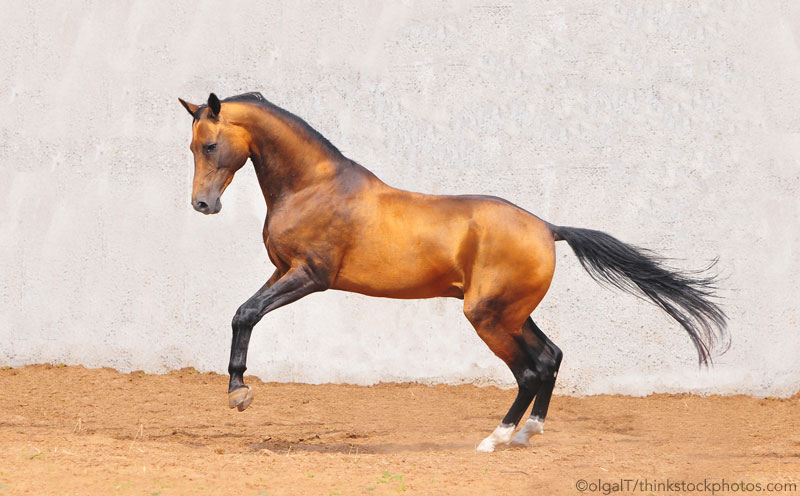By some accounts, the Akhal-Teke dates back 3,000 years, when these brave and exceedingly hardy horses were used by raiding parties traveling through the harsh steppes of central Asia in what is Turkmenistan today. While prized for their beauty—especially the brilliant coat that seems to be lit from within—it is the breed’s stamina, endurance, speed and loyalty that were even more cherished, for these qualities were crucial to the survival of both horse and human in the Karakum desert environment they called home.

The low point for the Akhal-Teke came after the Soviet Union’s absorption of Turkmenistan in 1917. Many horses were slaughtered, reducing the population to about 1,200 horses.
Over the next 50 years, renewed interest in this unique breed has brought it back from the brink. Today, the breed is regaining strength and vitality. It’s estimated that about 6,000 horses can be found worldwide, primarily in Turkmenistan, Russia, North America and Europe. The Akhal-Teke first came to the U.S. in 1979; about 600 purebred horses can now be found in the States.
Elegant and efficient, the Akhal-Teke’s conformation has been compared to that of a greyhound or Saluki, with long but strong backs, slim bodies, willowy necks and long legs. Like other desert horses, they have good bone and solid hooves. Their athletic conformation as well as their sensitivity allow the Akhal-Teke to succeed in a variety of disciplines, including dressage, jumping, endurance riding and eventing.
The Science Behind the Shimmer
Many Akhal-Tekes have a beautiful and unusual metallic glow to their coat, a characteristic frequently associated with the breed. Their hair has a smaller and sometimes nonexistent opaque core when compared to that found in typical horse hair. Light is able to enter the larger transparent medulla of the hair shaft and refract through it, resulting in a unique sheen.






